Rademacher addZ White + Colour RGB LED bulb review
Now that we're spending a lot more time in our own home, it can be nice to add some extra flair to spice up your living environment. Smart LED bulbs are an easy way to dive into smart home technology, they're installed in almost no time and offer endless possibilities. Whether you want bulbs with different tones of white or bulbs that cover the full RGB spectrum, there are a lot of products on the market to satisfy your needs.The most well-known provider of smartbulbs is Philips Hue, but there are also plenty of other manufacturers. In this review, I'm taking a look at the addZ series from Rademacher. Launched a couple of months ago, these smart LED bulbs are offered with E27, E14, and GU10 fittings.
Rademacher -- the driver of your smart home
So who is Rademacher? The name of this German company translated to "wheelmaker". Rademacher was founded in 1967 and these days the company is specialized in smart home solutions. Rademacher offers a versatile product lineup that mainly centers around its HomePilot device. Designed to be the driver of your smart home, the Rademacher HomePilot can register up to 100 wireless devices. You can control it via the HomePilot smartphone app and via Amazon Alexa or Google Assistant.With a fully Rademacher-equipped smart home, you can control your window shutters, adjust your central heating temperature, check if a window/door is open, switch off power outlets, and close your garage door. It even works with scenes that handle multiple tasks simultaneously. For example, you could use an "end of work" scene that dims the living room lights, sets the heating to a certain temperature, and lowers the shutters. It all sounds very science fiction-like but it's really just a matter of throwing enough money at it.
Zigbee-based smart bulbs
Last year, Rademacher made an entry into the smart bulb market. The addZ White + Colour is the firm's first smart bulb series. In this review, I'm exclusively taking a look at the E27 bulb. As is typical, smaller bulbs offer lower light output. The bulb with E27 fitting is the most powerful, the light output of this 8.5W bulb is rated at 806 lumen. The Philips Hue E27 White & Color Ambiance LED that I tested last year was a 9.5W bulb rated at 806 lumen at 4000K. Actual brightness depends on the color, some colors are a lot dimmer than others. Both bulbs have a lifespan of 25000 hours.The product ships in a small cardboard box that highlights the main technical specifications. This RGB LED bulb offers 16 million colors and a color temperature ranger of 1800K to 6500K. It has a standby power consumption of under 0.5W and is designed to handle 50 000 on/off switches. The new European energy label, listed on the website, is F.
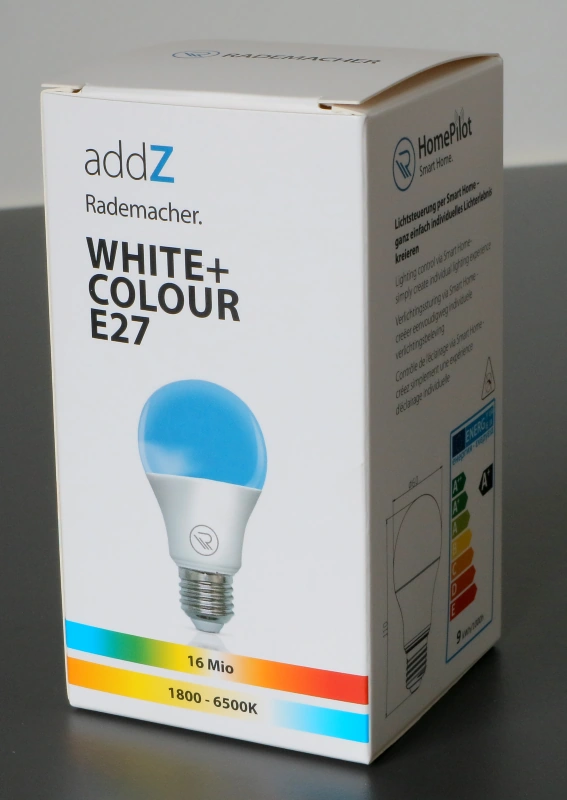
While Philips Hue E27 bulbs look very different versus traditional E27 bulbs, Rademacher decided to stick with the old school design. The biggest difference in comparison with an old lamp is that the top of the bulb is not translucent but milky white.
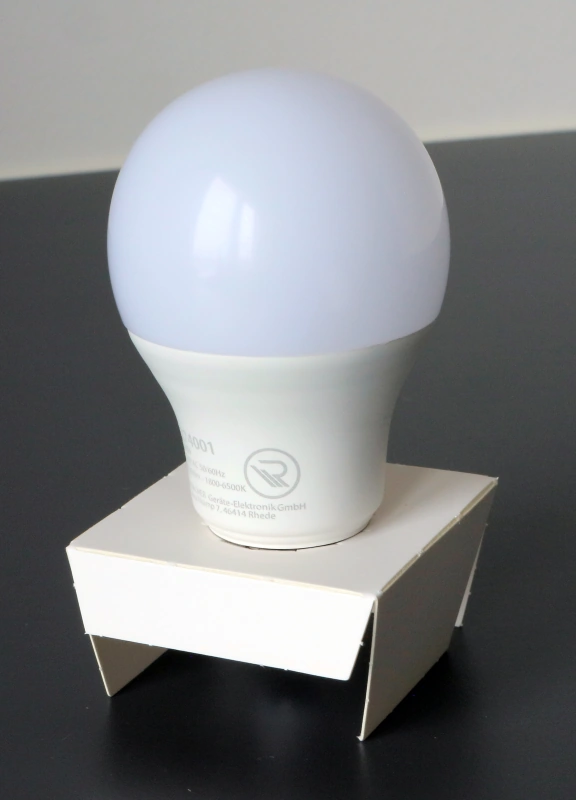
And here we have the E27 fitting. Nothing special to see here, it's a basic bulb that is installed in a matter of seconds. The bulb has a diameter of 60mm and is 110mm tall.
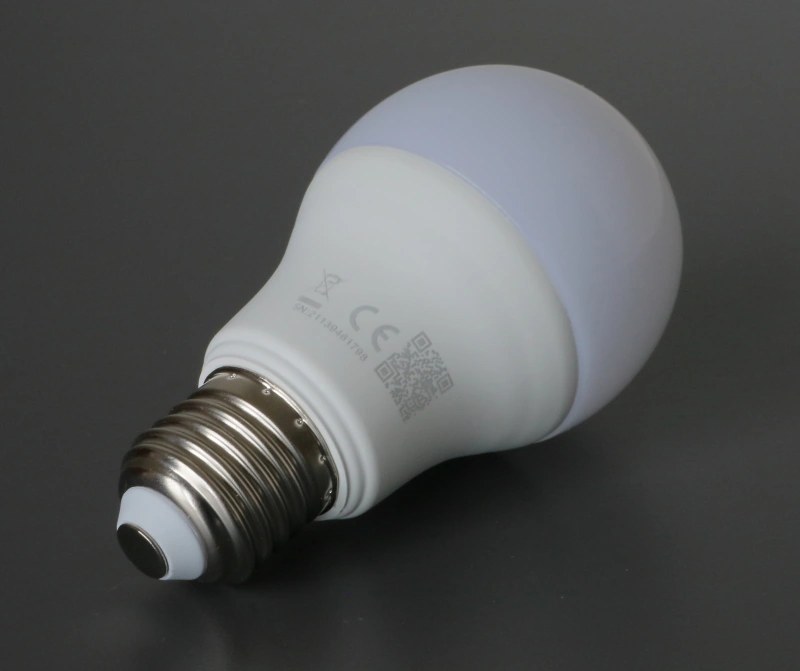
How it connects to your home network
There are two ways to use the Rademacher addZ bulbs; you can either use it as a budget option for an existing Zigbee-based smart bulb system or decide to completely tap into the Rademacher ecosystem. Perhaps the biggest downside here is that Rademacher has no budget option if you exclusively want smart bulbs -- and not the rest of the company's smart home portfolio. A Philips Hue Bridge will set you back around 59.99EUR while the Rademacher HomePilot costs 204.98EUR. And unfortunately, the HomePilot does not support addZ bulbs out-of-the-box. To make the HomePilot compatible with addZ bulbs you also need to purchase the HomePilot addZ stick. In total, you're looking at a 243.98EUR investment to get started with the Rademacher ecosytem.But as I mentioned, it's possible to use the bulbs in an existing Zigbee-based smart home bulb setup. The name addZ means "addiere Zigbee", which is a reference to the fact that you can expand HomePilot with Zigbee functionality. The bulbs from Rademacher use the Zigbee 3.0 standard, a low-power communications standard commonly used for home automation devices. It also works the other way around, the addZ stick supports the integration of other bulbs like Philips Hue, Ikea Trådfri, Ledvance Smart+, Tint, and Innr.
The HomePilot itself will be the subject of a follow-up review so in this article we're not going in-depth into the functionalities of this device. Just know that you can install up to 50 smart bulbs with a HomePilot plus the addZ stick. That limit is similar to what Philips offers with its Hue Bridge. The addZ stick plugs into the rear of the HomePilot device.
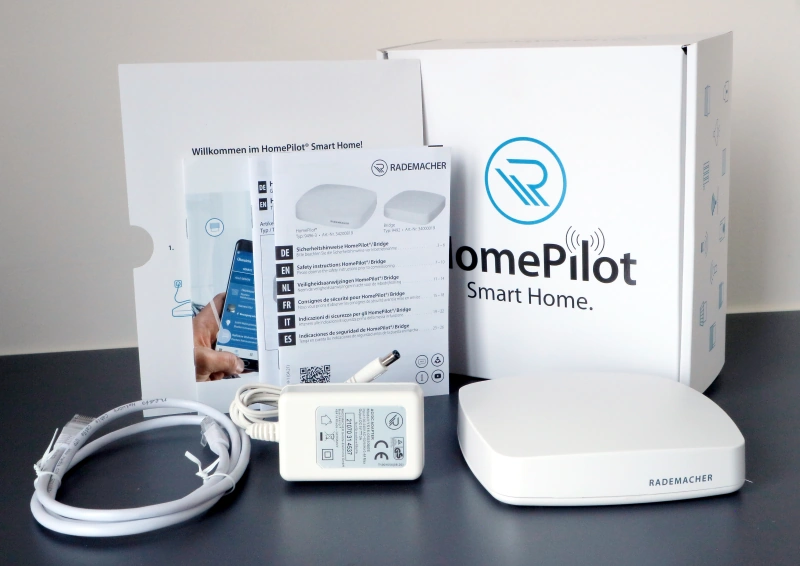
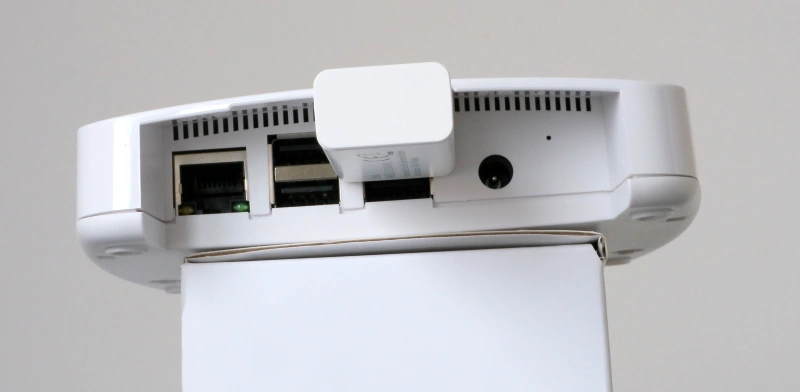
Quick integration with Philips Hue
As I already have a couple of Philips Hue smart bulbs, my first test with Rademacher addZ was to test how it would behave when used in combination with the Philips Hue bridge. The installation was pretty quick, I installed the addZ bulb into an E27 socket and Philips Hue quickly discovered it. One strange thing was that the Philips Hue app showed two new bulbs, one of them was the addZ bulb and the other new entry basically did nothing. I repeated the installation and got the same result. I'm not entirely sure what's causing this behavior but the quick fix was to just delete the second bulb from the Philips Hue app.In terms of operation, the addZ bulb is very similar to the Hue bulb. It has a soft on/off light effect and you can effortlessly control the color and brightness of the bulb. You can use it in scenes and program it the way you want it. Voice control via Google Assistant was no problem either, Google Home picked up the bulb without a hitch. One small gripe perhaps is that with default white colors, I expected the 1% brightness to be a bit dimmer.
Then I did a factory reset by switching the bulb on/off six times before I moved on to the Rademacher HomePilot.
Using the Rademacher HomePilot app
As mentioned above, if you have the Rademacher HomePilot, you can make this device compatible with addZ bulbs by installing the addZ USB stick. HomePilot connects to your WiFi network and comes with an Android and iOS app that offers a lot of capabilities. The creation of a HomePilot account involves the handing over of a ton of personal information, after this the app will scan your network to detect the HomePilot device. Next, you're given the option to enable remote access to the HomePilot device. When this feature is switched off, it's only possible to control your smart devices when your device (aka smartphone) is connected to your home network.
Once the app is configured, you can add devices to your HomePilot via the app or by surfing to the local IP of the device via a browser. This IP can be found in the HomePilot app.
Important to know is that HomePilot may need to be updated to the latest firmware to support the addZ stick. In my case, I had to do not one but two updates before I was able to find my devices. Firmware updates are done via the configuration panel of the app.
When everything is set up, you can find the addZ bulbs by doing a scan. You can give each bulb a name and place bulbs in groups with other bulbs (or other home automation products from Rademacher). You can also create scenes that do multiple things simultaneously.
Controlling the bulb is done via the screen below, there are two color wheels and a brightness dial. The first color wheel lets you cycle between all the white colors; ranging from blue white to yellow white. Then there's also the RGB wheel that lets you pick between 16 million colors. Overall, the options here are pretty basic. I feel the Philips Hue app is more convenient to use, especially because it comes with a couple of handy presets like for setting the bulb to maximum brightness, reading modus, or night-light modus.
Apologies for the Dutch-language app screenshots but that's how my smartphone is configured.
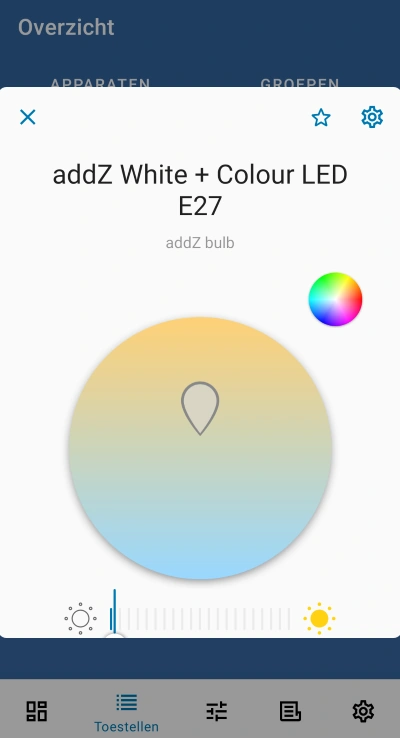
Next, it's also possible to configure a couple of parameters. First up, voice control needs to be activated manually. Next we have a setting to control the cycling time. This configures how many seconds the lamp should take to go from 0% to the specified brightness level whenever you turn it on. It also works the other way around; the dimming speed when you switch off the bulb. Thirdly, there is also an option to configure the switch-on behavior. This is the brightness the bulb should use when you switch it on via an external source.
Overall, the HomePilot app is easy to use, but some more options would be welcome.
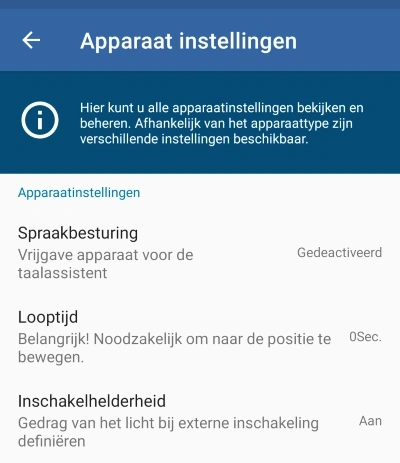
Conclusion
While not the cheapest, the Rademacher addZ bulbs are an attractive alternative versus the offerings from market leader Philips Hue. Rademacher offers a similar feature set and thanks to the Zigbee 3.0 support there is broad compatibility with other products. The bulb offers an old school E27 design and, at least based on the specifications, it should have a long lifespan of 25000 hours. Light output and RGB colors are brilliant and the addZ bulbs offer all the functionalities you expect from modern bulbs, including voice control via Google Home assistant or Amazon Alexa.
Via the Rademacher webshop you can get a single addZ White + Colour E27 LED bulb for 35.49EUR. The GU10 and E14 variants have exactly the same price. A similar E27 bulb in the Philips Hue webshop is priced at 54.99EUR -- but that model does have Bluetooth support, a feature not supported by Rademacher's addZ. Overall, it's definitely a big price difference, especially if you need several bulbs.
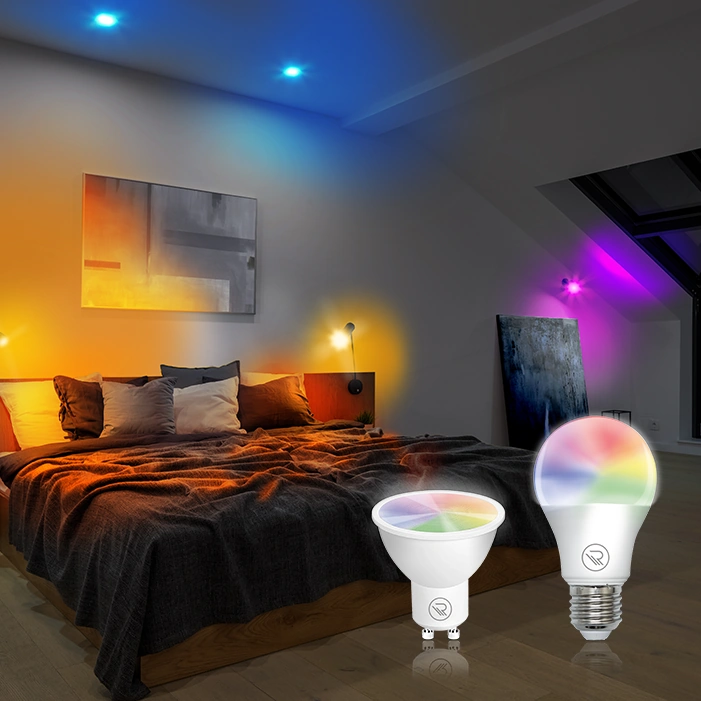
The Good Stuff
- Cheaper than similar Philips Hue bulbs
- Adjustable color and brightness
- Easy to install
- Google Assistant and Alexa support
- Nice capabilities in combination with other Rademacher products
- HomePilot allows controlling of bulbs via the Internet
The Bad Stuff
- Still pretty expensive.
- HomePilot requires addZ stick for addZ bulbs support
- Light control via the app is pretty basic
DVHARDWARE gives the Rademacher addZ RGB LED bulbs a 8.5/10 and our Seal of Approval.


Added: January 2nd 2022
Product reviewed: Rademacher addZ White + Colour RGB LED bulb
Reviewer: Thomas De Maesschalck
Score: 8.5/10